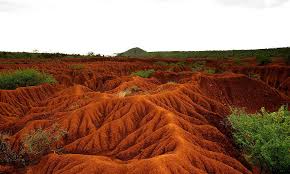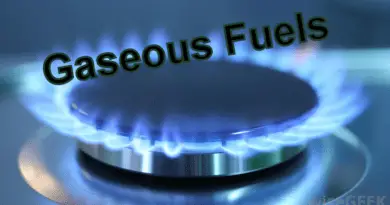Degradation and Types of Pesticides in Soils
Alongside sorption, degradation is the second most important process used to predict the fate of pesticides in soils (Boesten and van der Linden, 1991). Many pesticides dissipate rapidly in soils. This process is mineralization and results in the conversion of the pesticide into simpler compounds such H20, C02, and NH3.
While some of these processes are as a result of chemical reactions such as hydrolysis and photolysis, microbiological catabolism and metabolism is usually the major route of mineralization. Soil micro biota utilize the pesticide as a source of carbon or other nutrients.
Some chemicals (for example 2, 4-D) are quite rapidly broken down in soil while others are less easily attacked (2,4,5- T). Some chemicals are very persistent and are only slowly broken down (atrazine)”.
Standard laboratory and field dissipation studies are performed to assess the rate of degradation (often expressed as a first-order half-life or DT50, the time required for 50% of the initial dose to disappear).
Rates of degradation are influenced by physicochemical properties of the soil [such as pH and organic carbon (OC) content], biological properties (activity and distribution of microorganisms), and environmental conditions that control soil temperature and moisture content.
Both route and rate of degradation also depend on properties of the chemical. Variability in degradation rate is expected, and numerous studies have provided evidence for field-to-field variation in the degradation rates of pesticides (Walker et al., 2001).
Extrapolation from measurements on a set of soils to prediction for a different soil is therefore a common problem in environmental assessment. A greater understanding of the factors that influence degradation rates is required to support this extrapolation and thus ensure the safe use of new and existing products.
Pesticide Degradation in Soil
Soil constitutes a major environmental sink for many pesticides from which they are taken up by plants, move into the bodies of invertebrates, pass into water or air, and are broken down. However, pesticides applied do not remain in the soil forever.
The degradation of a pesticide in soil is dependent on a host of conditions, such as soil type, organic matter content, clay content, pH, the nature of soil colloids, the microflora and microfauna present in soil, liquid and air flow through the soil, the cultural practices, and the exposure to wind, sunlight, rain and temperature, etc.
Superimposed on all these factors is the chemical nature of the pesticide. Most of these conditions and factors are often interrelated and have been discussed in earlier chapters. Pesticide degradation, or the breakdown of pesticide, usually is beneficial. Pesticide-destroying reactions change most pesticide residues in the environment to nontoxic or harmless compounds.
However, degradation is detrimental when a pesticide is destroyed before the target pest has been controlled. The three types of pesticide degradation are microbial, chemical, and photo-degradation.
Types of Pesticide Degradation in the Soil
Microbial degradation
Microbial degradation is the breakdown of pesticides by fungi, bacteria, and other microorganisms that use pesticides as a food source. Most microbial degradation of pesticides occurs in soil.
Soil conditions such as moisture, temperature, aeration, pH, and the amount of organic matter affects the rate of microbial degradation because of their direct influence on microbial growth and activity.
The frequency of pesticide application also is a factor that can influence microbial degradation. Rapid microbial degradation is more likely when the same pesticide is used repeatedly in a field. Repeated application can actually stimulate the buildup of organisms that are effective in degrading the chemical.
As the population of these organisms increases, degradation accelerates and the amount of pesticide available to control the pest is reduced.
In extreme cases, accelerated microbial degradation has led to certain products being removed from the marketplace. Microorganisms greatly reduce the effectiveness of these chemicals soon after application.
The possibility of very rapid pesticide breakdown is reduced by using pesticides only when necessary and by avoiding repeated applications of same chemical. Alternating between different classes, groups or formulations of pesticides can minimize the potential for microbial degradation problems as well as pest resistance
Chemical degradation of pesticides in the soil
Chemical degradation is the breakdown of pesticides by processes that do not involve living organisms. Temperature, moisture, pH, and adsorption, in addition to the chemical and physical properties of pesticide, determine which chemical reactions take place and how quickly they occur.
Read Also : Factors Affecting the Mobility of Other Toxicants in Soil
One of the most common pesticide degradation reactions is hydrolysis, a breakdown process in which the pesticide reacts with water. Many organophosphate and carbamate insecticides are particularly susceptible to hydrolysis under alkaline conditions. Some are actually broken down within a matter of hours when mixed with alkaline water.
Product labels may warn against mixing a pesticide with certain fertilizers, other pesticides or water with specific characteristics. Following these precautions can help prevent pesticide degradation and potential incompatibility problems.
In some situations, buffers or other additives may be available to modify spray mix conditions and prevent or reduce degradation. Pesticide degradation and possible corrosion of application equipment can be avoided by not allowing a spray mix remain in a tank for a long period of time.
Photo-degradation of pesticide in the soil
Photo-degradation is the breakdown of pesticides by light, particularly sunlight. Photo-degradation can destroy pesticides on foliage, on the surface of the soil, and even in the air.
Factors that influence pesticide photo-degradation include the intensity of the sunlight, properties of the application site, the application method and the properties of the pesticide. Pesticide losses from photo- degradation can be reduced by adding the pesticide to the soil during or immediately after application



